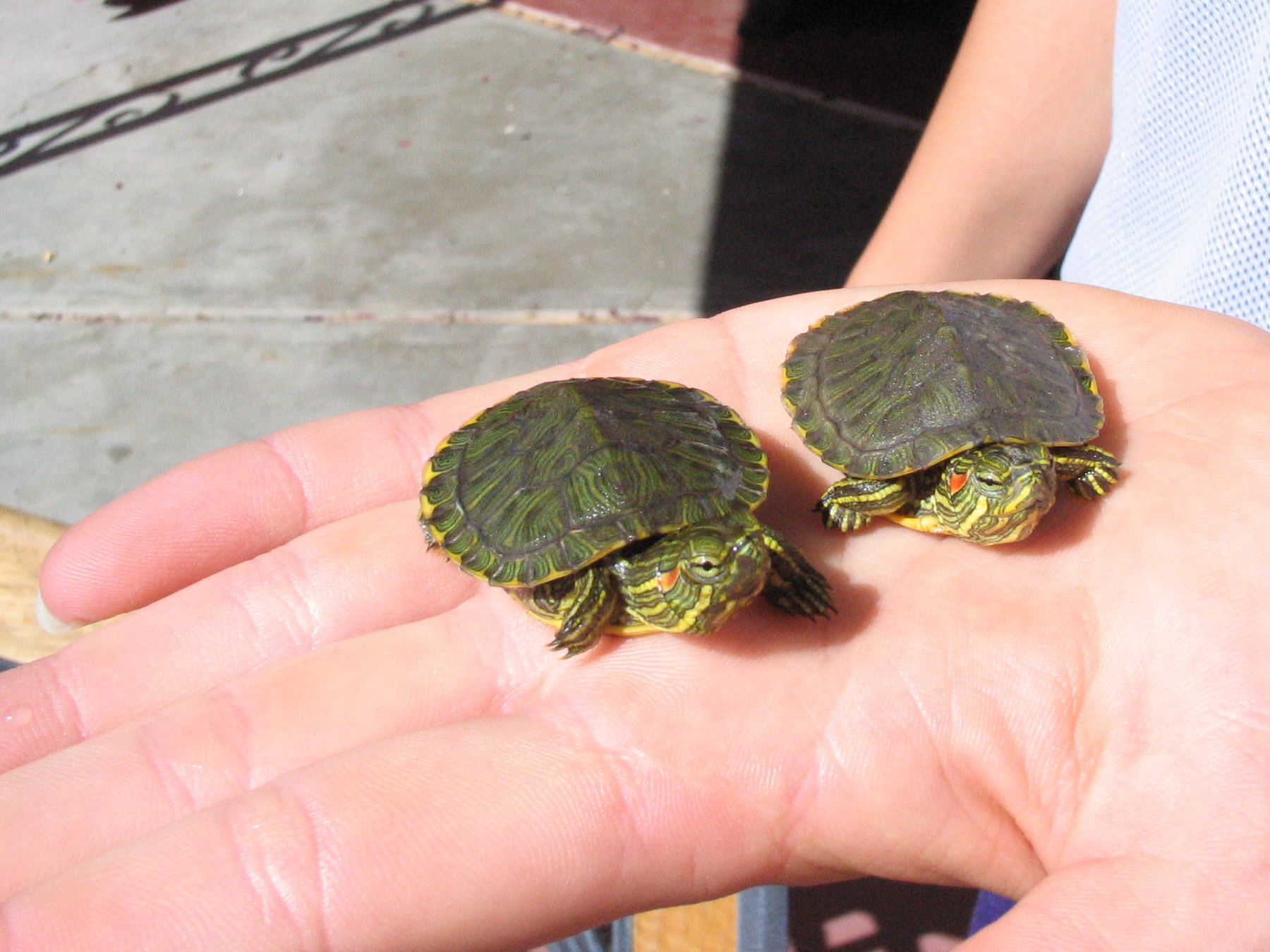So you’ve got some baby turtles and you want to make sure they have the right water conditions, huh? Well, let me tell you, it’s important to ensure proper water depth and accessibility for these little ones. Baby turtles are small and delicate, so you want to make sure they have enough water to swim in but not too much that they can’t reach the surface to breathe.
First things first, the water depth should be shallow enough that the baby turtles can easily touch the bottom with their feet. This allows them to walk and explore, which is important for their development. But at the same time, you want to make sure the water is deep enough for them to swim and exercise their little flippers. It’s a balancing act, my friend.
In addition to the depth, you want to make sure there are ramps or platforms in the water that the baby turtles can use to climb out. These little guys need to bask in the sun to regulate their body temperature, so having easy access to dry areas is crucial. You can create these ramps using rocks, driftwood, or even floating docks. Just make sure they’re sturdy and easy for the baby turtles to climb onto.
Alright, now you’re all set to provide the baby turtles with a safe and comfortable environment. Good luck, and I hope your little ones thrive!
Ensuring Proper Water Depth And Accessibility For Baby Turtles
When setting up a turtle tank, it is essential to consider the water depth and accessibility for baby turtles. Creating an environment that meets their specific needs will ensure their overall well-being and development. In this article, we will explore the steps involved in setting up the ideal water depth and accessibility for baby turtles, along with important considerations for maintaining clean water and providing adequate lighting and nutrition.
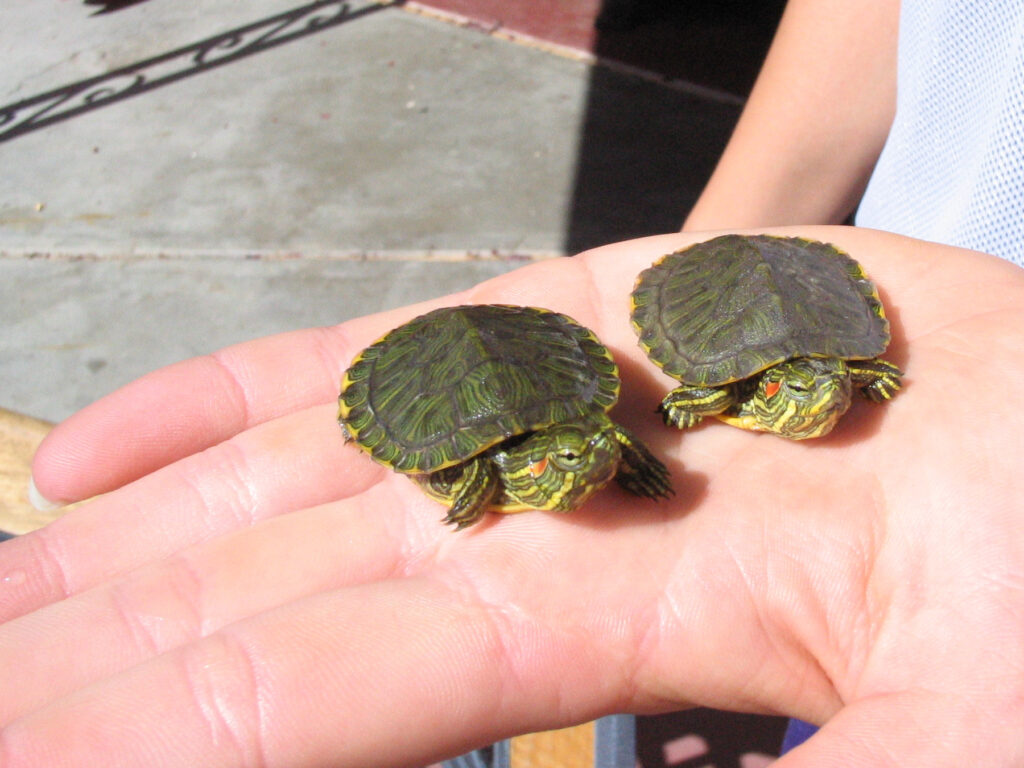
Choosing the Right Tank Size
The first step in setting up a turtle tank is to choose the right tank size. Baby turtles will require a smaller tank compared to adult turtles, as they need an environment that allows them to easily access the surface for breathing. A general rule of thumb is to provide a tank that is at least four times the length of the turtle’s shell size. This will provide ample swimming space and allow for the installation of necessary equipment such as basking areas and water filters.
Installing a Basking Area
A basking area is crucial for baby turtles as it provides them with a dry platform to rest and regulate their body temperature. It is essential to install a basking area that is large enough for the turtles to comfortably climb onto and bask under a reliable heat source. The basking area should be positioned in a way that allows the turtles to easily access it from the water without any obstacles.
Creating a Water Filter System
Maintaining clean and clear water is vital for the health of baby turtles. Installing a water filter system is necessary to remove toxins and waste from the water. There are various types of water filters available on the market, including canister filters, sponge filters, and hang-on-back filters. It is important to choose a filter size and type that can handle the tank’s water volume and the number of turtles in the tank.
Maintaining Water Temperature
Baby turtles require a specific water temperature range to thrive. The ideal water temperature for most baby turtles is between 75°F and 80°F (24°C and 27°C). It is important to monitor and maintain the water temperature within this range using a reliable thermometer. Consider investing in an aquarium heater to ensure consistent water temperature. Remember to avoid drastic temperature changes, as it can negatively impact the health of baby turtles.
Understanding the Turtle Species’ Requirements
To determine the ideal water depth for baby turtles, it is crucial to consider the requirements of the specific turtle species. Some turtles prefer deeper water, while others thrive better in shallower depths. Research the specific species to understand their natural habitat and replicate it as closely as possible. This will help ensure the turtles feel comfortable and secure in their tank.
Providing a Shallow Water Area
In addition to an appropriate water depth, it is important to provide a shallow water area for baby turtles. This area should allow the turtles to easily climb onto a dry surface or basking area. By creating a shallow water area, you give the baby turtles the opportunity to gradually acclimate to deeper waters as they grow.
Gradually Increasing Water Depth
As the baby turtles grow, it is necessary to gradually increase the water depth in their tank. This can be done by adding more water over time, ensuring that the turtles can still access the basking area without difficulty. Monitor the turtles’ behavior and comfort level during this process. If they show signs of distress or struggle, reduce the water level temporarily until they can adapt to the deeper water.
Monitoring the Turtle’s Behavior and Comfort Level
Observing the turtles’ behavior and ensuring their comfort is crucial in maintaining the optimal water depth. If the turtles appear stressed or are constantly struggling to reach the surface, it may indicate that the water depth is too deep for them. On the other hand, if the turtles frequently spend time underwater without basking, it may suggest that the water depth is too shallow. Regularly assess these factors and make adjustments as necessary to provide a suitable environment for the baby turtles.
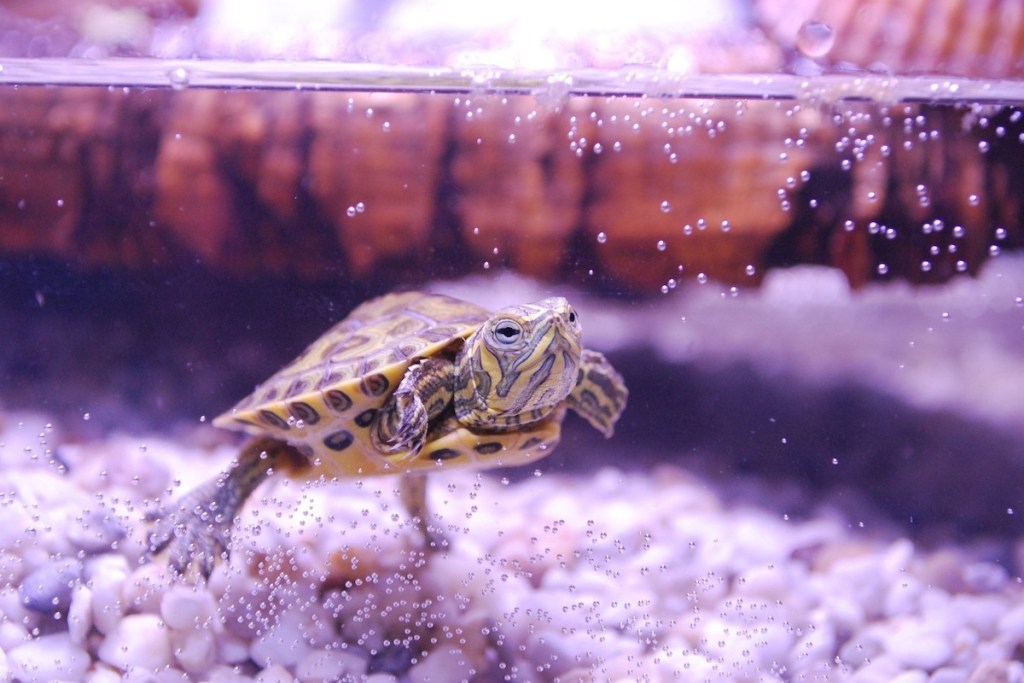
Adding a Ramp or a Platform
To ensure accessibility for baby turtles, adding a ramp or platform is highly recommended. This offers them an easy way to climb onto the basking area or access different water depths within the tank. The ramp or platform should be of appropriate size and angle, allowing the turtles to move both up and down with ease.
Ensuring a Gentle Slope
The ramp or platform should provide a gentle slope for the baby turtles to navigate. Avoid steep inclines, as they can be challenging for the turtles to climb. A gradual slope will enable the turtles to comfortably move between different water depths and reach their basking area without any difficulties.
Using Slip-Resistant Materials
When constructing the ramp or platform, it is important to use slip-resistant materials. Baby turtles’ small legs may struggle to grip onto slick surfaces, increasing the risk of accidents or injuries. Consider using materials with a textured surface, such as reptile-safe mats or tiles, to provide better traction for the turtles.
Positioning Basking Areas Near the Ramp
To maximize accessibility, it is beneficial to position the basking areas near the ramp or platform. This allows the baby turtles to easily transition from the water to the basking area without having to travel long distances. It also encourages them to spend more time basking, which is essential for their thermoregulation and overall health.
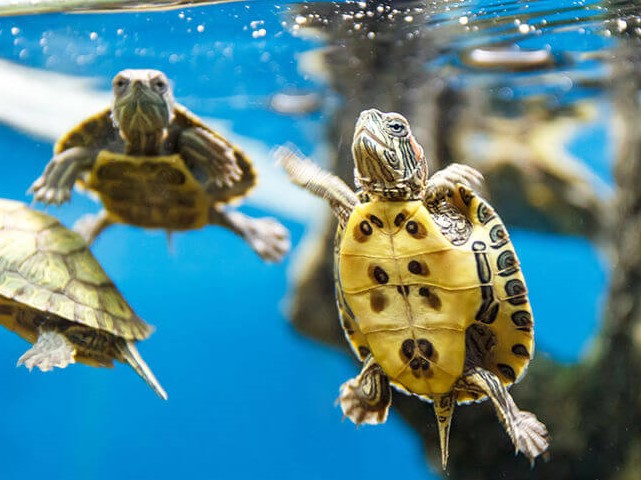
Avoiding Sudden Changes in Water Depth
When adjusting the water depth or making any changes to the tank, it is crucial to avoid sudden changes that may startle or stress the baby turtles. Gradual transitions are much easier for them to adapt to, minimizing the risk of discomfort or injury. Take your time and make changes slowly, allowing the turtles to adjust at their own pace.
Using an Appropriate Water Filtration System
Maintaining clean and clear water is vital for the health of baby turtles. Utilizing an appropriate water filtration system is essential to remove waste, debris, and harmful chemicals from the water. Choose a filter suitable for the tank size and consider the specific needs of baby turtles. Regularly clean and maintain the filter to ensure its efficiency in providing optimal water quality.
Regularly Cleaning the Tank
In addition to using a water filter, regularly cleaning the tank is necessary to prevent the buildup of waste and harmful bacteria. Perform partial water changes weekly, removing around 25% of the water and replacing it with fresh, dechlorinated water. Use a gravel vacuum to siphon any debris from the substrate and clean the tank walls with a non-toxic aquarium-safe cleaner.
Monitoring Water Quality Parameters
To ensure the water quality remains suitable for baby turtles, it is important to regularly monitor key parameters. Test the water for pH, ammonia, nitrite, and nitrate levels using appropriate aquarium testing kits. Maintain these parameters within safe ranges to prevent potential health issues for the baby turtles.
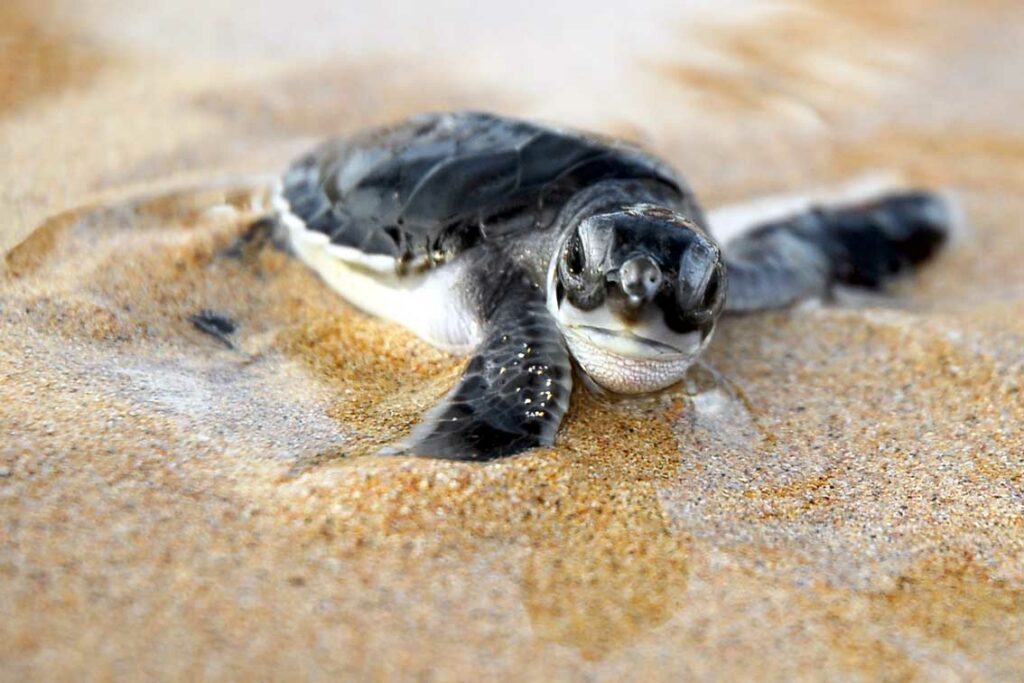
Avoiding Overcrowding the Tank
Proper tank size is essential to prevent overcrowding, as it can lead to poor water quality and increased stress levels for the baby turtles. Avoid adding too many turtles or other aquatic animals to the tank, as it can strain the filtration system and create an unsuitable environment. Research the appropriate number of turtles for the specific tank size and species to ensure their well-being.
Using a Reliable Thermometer
Accurately monitoring the water temperature is crucial to the health and well-being of baby turtles. Use a reliable aquarium thermometer to consistently assess the water temperature in their tank. Consider using a digital thermometer that provides a precise temperature reading for greater accuracy.
Maintaining the Recommended Temperature Range
Maintaining the recommended water temperature range is essential for the baby turtles’ health and development. Ensure that the water temperature stays within the specified range for the specific turtle species. Make adjustments to the aquarium heater or use a heating lamp if necessary. Monitor the temperature regularly to promptly address any fluctuations.
Avoiding Excessively High or Low Temperatures
Extreme temperatures can be detrimental to baby turtles. Avoid excessively high or low water temperatures, as they can lead to stress, illness, or even death. Ensure that the tank is not exposed to direct sunlight or drafts that may cause drastic temperature changes. Maintain a stable temperature within the recommended range to provide a safe and comfortable environment for the baby turtles.
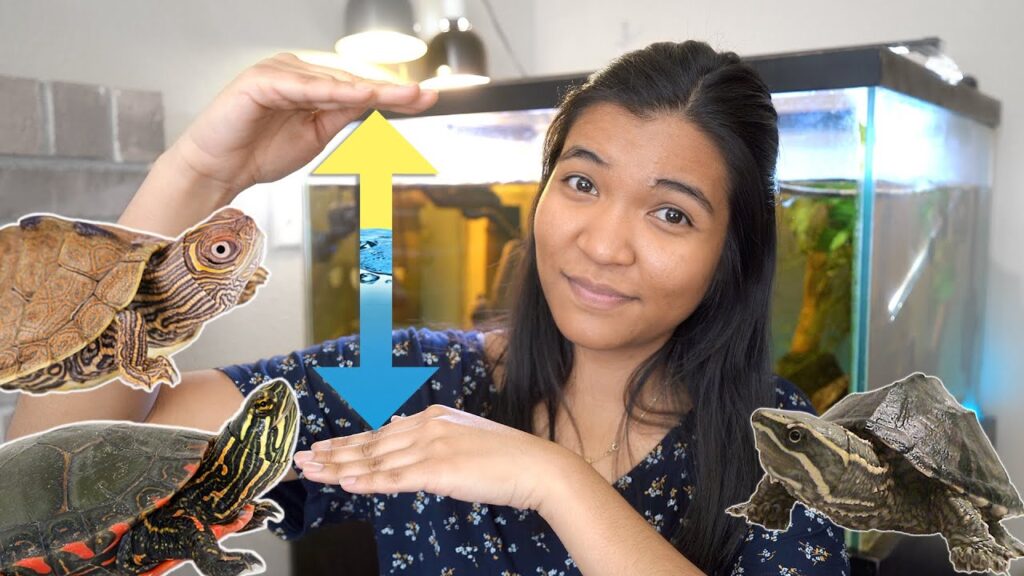
Feeding a Balanced and Varied Diet
Providing the baby turtles with a balanced and varied diet is crucial for their growth and overall health. Research the dietary requirements of the specific turtle species and offer a combination of commercial turtle pellets, fresh vegetables, fruits, and occasional live or frozen prey such as insects or small fish. This will ensure they receive the necessary nutrients for their well-being.
Using Appropriate Portion Sizes
To avoid overfeeding or underfeeding, it is important to use appropriate portion sizes when feeding baby turtles. Monitor their appetite and adjust the portion sizes accordingly. As a general guideline, offer a quantity that can be consumed within around 5 minutes. Remove any uneaten food to maintain water quality and prevent the food from decomposing.
Supplementing with Calcium and Vitamins
Baby turtles require adequate calcium for proper shell development. Provide calcium supplements in the form of cuttlebone or calcium powder dusted on their food. Additionally, consider using reptile-specific multivitamin supplements to ensure they receive a well-rounded nutritional intake. Consult with a veterinarian to determine the appropriate supplementation regimen for the specific turtle species.
Avoiding Overfeeding
Overfeeding can lead to obesity and associated health issues for baby turtles. Avoid the temptation to overfeed them, as it may harm their long-term health. Stick to a regular feeding schedule and offer appropriate portion sizes. Monitor their weight and body condition regularly to ensure they maintain a healthy and balanced growth.
Regularly Testing Water Parameters
Regularly testing the water parameters in the turtle tank is essential for maintaining a healthy environment. Use aquarium testing kits to measure parameters such as ammonia, nitrite, nitrate, and pH levels. This will enable you to identify any changes or irregularities that may indicate an issue with water quality. Take action promptly to address any water parameter imbalances.
Checking for Signs of Illness
Regularly monitor the baby turtles for any signs of illness or abnormal behavior. Look for symptoms such as loss of appetite, lethargy, abnormal growths, changes in shell appearance, or excessive shedding. Any noticeable changes may indicate underlying health issues. If you notice any abnormalities, consult with a veterinarian who specializes in reptile care for proper diagnosis and treatment.
Taking Immediate Action in Case of Issues
If you notice any health or water quality issues, it is important to take immediate action to prevent further complications. Address any concerns promptly by adjusting water parameters, consulting a veterinarian, or making necessary changes to the turtle’s environment. Acting swiftly can significantly improve the chances of a positive outcome for the baby turtles.
Consulting a Veterinarian for Professional Guidance
A veterinarian who specializes in reptile care can provide valuable guidance and expertise in maintaining the health and well-being of baby turtles. Regular veterinary check-ups are important to ensure their overall health and to address any concerns or questions you may have. Establish a relationship with a reptile veterinarian who can offer professional advice and assist you in providing the best possible care for your baby turtles.
Researching the Specific Turtle Species
To ensure proper care for your baby turtles, it is essential to research the specific species you are keeping. Each species may have unique requirements in terms of diet, habitat, temperature, and water depth. Understanding their natural habitat and behavioral traits will help you create an environment that closely resembles their natural habitat.
Staying Informed about Health and Care Practices
Stay up to date with the latest research and information regarding the health and care practices for baby turtles. Join reputable online forums or communities dedicated to turtle care, where you can learn from experienced turtle owners and exchange knowledge and tips. Keeping yourself informed about best practices and advancements in turtle care will help you provide the most suitable environment for your baby turtles.
Joining Online Forums or Communities
Engaging with online forums or communities is a fantastic way to connect with other turtle enthusiasts and seek advice or support. There are numerous online platforms dedicated to turtle care where enthusiasts share their experiences, ask questions, and provide helpful suggestions. Participating in these communities can be an excellent opportunity to gain insights and learn from others’ experiences.
Attending Reptile Care Workshops or Seminars
Consider attending reptile care workshops or seminars to further enhance your knowledge and skills in caring for baby turtles. These events offer the opportunity to learn from experts in the field, ask specific questions, and gain hands-on experience. Workshops and seminars can provide valuable information on various topics, including proper tank setup, nutrition, health monitoring, and overall turtle care.
Using Turtle-Safe Decorations and Substrate
When setting up the turtle tank, ensure that all decorations and substrate used are turtle-safe. Avoid using materials that could be harmful if ingested or can cause injury to the turtles. Choose ornaments and substrate made specifically for reptiles. Authentic reptile-safe decorations and substrates prevent potential health issues and provide a safe environment for baby turtles.
Avoiding Sharp or Hazardous Objects
Eliminate any sharp or hazardous objects from the turtle tank to prevent injuries to the baby turtles. Avoid placing rocks with sharp edges, glass shards, or any objects that may have loose parts that could be ingested. Regularly inspect the tank to ensure it remains free of any potential hazards that could harm the turtles.
Securing the Tank to Prevent Escapes
Baby turtles are agile and curious creatures that may attempt to escape their tank. To prevent escapes, ensure the tank is securely closed with a tight-fitting lid or cover. Provide a mesh or screen cover that allows for proper ventilation while keeping the turtles safely contained within the tank. Regularly check the tank and cover for any potential gaps or weaknesses.
Keeping Toxic Substances Out of Reach
Keep all toxic substances, including cleaning agents, pesticides, and plants, out of reach of baby turtles. These substances can be harmful or even fatal if ingested or come into contact with the turtles. Securely store all toxic materials away from the tank, ensuring they cannot accidentally spill or be accessed by the turtles.
In conclusion, setting up the proper water depth and accessibility for baby turtles is crucial for their health and well-being. By considering the specific requirements of the turtle species, gradually increasing water depth, providing adequate basking areas, and ensuring clean water, you can create an environment where baby turtles can thrive. Regular monitoring, proper nutrition, and ongoing education about turtle care practices will contribute to their long-term health and happiness. Remember to always consult with a veterinarian specialized in reptile care for professional guidance and support in providing the best care for your baby turtles.
